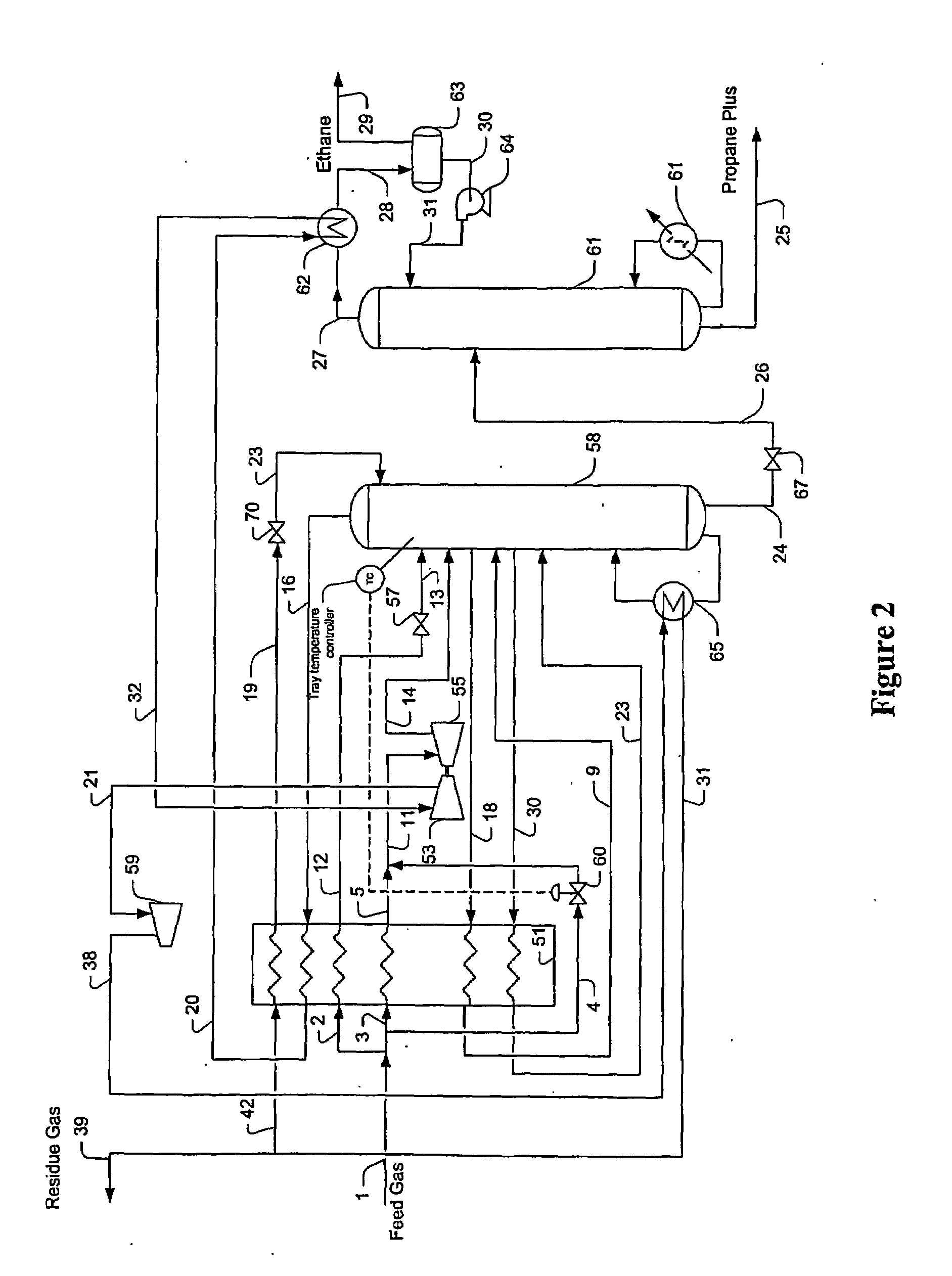NGL Recovery Methods and Configurations
a technology of ethane recovery and configuration, applied in the field of gas processing, can solve the problems of inability to achieve high ethane recovery in excess of 90%, inconvenient operation, and inability to perform extra refrigeration, etc., and achieve the effect of high recovery
- Summary
- Abstract
- Description
- Claims
- Application Information
AI Technical Summary
Benefits of technology
Problems solved by technology
Method used
Image
Examples
Embodiment Construction
[0026]The inventors have discovered that flexible and high ethane and / or propane recovery (e.g., at least about 90% C2 and at least about 99% C3) can be achieved for a feed gas with relatively high CO2 content (greater than 2%) using optimum temperature control in the separation column(s). In most configurations, optimum temperature control is achieved with an intermediate reflux condenser in a single-column configuration or by control of the expander discharge in a dual-column configuration. Such temperature control advantageously reduces, if not even entirely eliminates carbon dioxide freezing in the column. Most typically, the fractionator in contemplated configurations will receive at least two lean reflux streams.
[0027]In a particularly preferred configuration as illustrated in FIG. 1, an exemplary plant includes a fractionation column 58 that is fluidly coupled to an intermediate reflux condenser 61 that is used to provide cooling to a lower rectification section. It should be...
PUM
 Login to View More
Login to View More Abstract
Description
Claims
Application Information
 Login to View More
Login to View More - R&D
- Intellectual Property
- Life Sciences
- Materials
- Tech Scout
- Unparalleled Data Quality
- Higher Quality Content
- 60% Fewer Hallucinations
Browse by: Latest US Patents, China's latest patents, Technical Efficacy Thesaurus, Application Domain, Technology Topic, Popular Technical Reports.
© 2025 PatSnap. All rights reserved.Legal|Privacy policy|Modern Slavery Act Transparency Statement|Sitemap|About US| Contact US: help@patsnap.com



